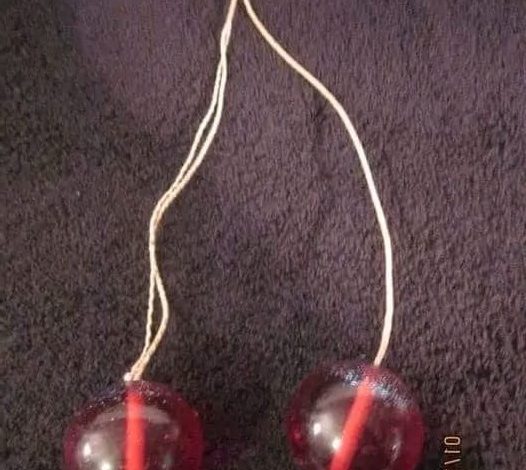The Rise and Fall of the Clacker Toy: A Nostalgic Look Back

ADVERTISEMENT
The Rise and Fall of the Clacker Toy: A Nostalgic Look Back
In the late 1960s and early 1970s, a simple yet mesmerizing toy took the world by storm: the clacker. Known by various names, including “click-clacks” or “knockers,” these toys became a cultural phenomenon, captivating children and parents alike. However, the clacker’s meteoric rise was matched by its abrupt fall, leaving it as a nostalgic relic of a bygone era.
The Anatomy of a Clacker
The clacker toy was deceptively simple in design. It consisted of two hard acrylic balls, typically brightly colored, attached to the ends of a string. A small ring or loop connected the string, allowing the player to hold and control the toy. The objective was straightforward: by moving the string up and down, the balls would swing around, clacking against each other in a rhythmic, hypnotic pattern.
Despite their simplicity, clackers required a surprising amount of skill to master. The goal was to get the balls to swing in a continuous arc, clacking together both at the top and bottom of the swing. When done correctly, the sound was rapid and satisfying—a staccato beat that became the soundtrack of many childhoods.
The Appeal of the Clacker Toy
The clacker’s appeal lay in its combination of simplicity and challenge. For children, it was a test of coordination and rhythm, a skill to be perfected and shown off to friends. The loud, percussive sound it produced was both a badge of honor and a source of endless entertainment. In an era before video games and smartphones, toys like the clacker offered an engaging and tactile form of play that resonated deeply with the youth of the time.
Clackers were also incredibly affordable, making them accessible to a wide audience. They were sold in toy stores, department stores, and even at local fairs, often available in a rainbow of colors. The toy’s widespread availability and low cost helped it become a ubiquitous presence in playgrounds and backyards across the world.
ADVERTISEMENT
The Downfall: Safety Concerns and Controversy
However, the very qualities that made clackers so popular also led to their downfall. The hard acrylic balls, when swung with enough force, could shatter upon impact, sending sharp shards flying in all directions. Reports of injuries began to surface, ranging from minor cuts to more serious eye injuries. As the number of incidents grew, so did concerns from parents, educators, and consumer safety groups.
By the early 1970s, the clacker toy had become the subject of increasing scrutiny. In some countries, safety regulations were introduced, leading to the toy being banned or redesigned with softer, less dangerous materials. However, these newer versions lacked the satisfying “clack” of the originals, and the toy’s popularity quickly waned.
Legacy and Nostalgia
Today, the clacker toy is remembered with a mix of fondness and caution. For those who grew up in the 60s and 70s, it remains a symbol of a simpler time, when toys were less about technology and more about skill and imagination. Vintage clackers are now collector’s items, sought after by those who wish to recapture a piece of their childhood.
The clacker’s story is a reminder of the fleeting nature of fads and the importance of safety in children’s toys. While its time in the spotlight was brief, the clacker toy left an indelible mark on the memories of a generation.
ADVERTISEMENT




